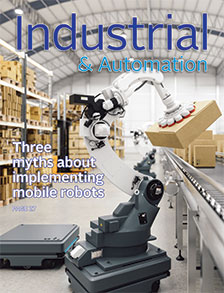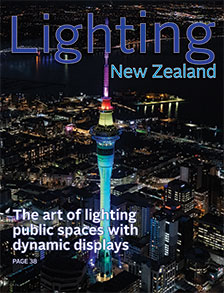Issue 149 May - June 2022Please note: The issue content below is just a summary of the articles in the printed magazine.
The articles are not available on-line.
Please refer to the printed magazine for the complete article.

COVER STORY
Power engineering and product support from Hiko
When the company known today as Hiko Power Engineering began supplying electrical equipment, components and tools to electricity utilities 85 years ago, designing and manufacturing its own product solutions for power distribution networks was not part of the plan.
But today it is a major driving force of the company having developed advanced assemblies that make connecting assets to networks safer, easier, more reliable and longer lasting, says Hiko Power Engineering general manager Geoffrey Sullivan.
These Hiko innovations include underground distribution pillars (UDPs), underground service connections for branching networks (U-Pillars), network link boxes, link pillars and distribution cabinets and modular LV frames for transformers.
Sullivan says Hiko Power Engineering has come a long way since Harry Hamer left Gough, Gough and Hamer, along with the company’s electricity product agencies. The company began manufacturing in 1959 in partnership with Bowthorpe and today Hiko manufactures the Bowthorpe HD series of line taps as its own brand and supplies product locally and to countries around the world who use British standards in their networks.
While the company continues to supply products from its exclusive European agencies such as EFEN, NKT, Pfisterer, Weber, Langmatz, Polaris and Gridkey, Hiko Power Engineering is now both a supplier of components and an engineering company designing and manufacturing assemblies for electricity distribution systems.
Please refer to the printed magazine for the complete article
NEWS
Delay in citing AS/NZS 3000 and other updated standards
While there is still an expectation that the government will announce a decision on how AS/NZS 3000 will be cited toward the end of this year, it is looking more likely that if any decision is made it will not take effect until 2023. This will be five years after the release of the 2018 edition.
In the meantime, MBIE says it is exploring alternative means of citing updated standards so that, in the future, the industry does not have to wait years for a standard edition upgrade to be cited in the Electricity Regulations.
Keeping the editions current by citation brings new techniques and technologies into play. Where standards are mandatory, citation resets the compliance playing field to the requirements of the new editions.
Where standards are voluntary, they are cited to recognise new editions as deemed to comply with the Regulations. This recognition provides legal protection for users and evidence of technical safety or compliance by their use.
Please refer to the printed magazine for the complete article
NEWS
AS/NZS 3000 today, ECPs tomorrow?
If AS/NZS 3000 cannot keep up with technology and safety developments and remain fit for purpose, is there a better way to provide technical guidance for the electrical industry? Electrical inspector Athol Gibson comments.
We are still working with the 2007 edition of the Wiring Rules. We may be able to say that It has done its job, but it has not been able to keep up with technological changes, no fault of its own.
When Standards NZ, a standalone entity, had control of New Zealand standards documents, we received revised documents that were delivered in a timely fashion. Since Standards NZ was absorbed into MBIE, there has been no noticeable evidence of delivery of revisions to updated standards.
Please refer to the printed magazine for the complete article
NEWS
Industry responds to stepped licensing proposal
The creation of registration and licence endorsements for specific areas of prescribed electrical work has been generally accepted by Master Electricians and by the New Zealand Electrical Inspectors Association (NZEIA).
These two industry organisations also have signalled their general acceptance of a tiered framework for a prospective electrician to progress from an initial registration as an electrical service technician to become an electrician.
However, in its response to the EWRB’s discussion document on stepped licensing, NZEIA expressed concern over the lack of detail on how a trainee is to progress from the intermediate level as an electrical installer to become an electrician. NZEIA says it does not support the installer class step because it could cause employers to “keep staff away from the full electrician’s registration”.
Please refer to the printed magazine for the complete article
NEWS
EWRB calls for more legal powers
In its latest five-yearly review of the Electricity Act, the EWRB is calling for more changes to the Board’s operation and powers and how it exercises its disciplinary authority.
These changes are additional to those the Board wants made to the Electricity Act to broaden its scope on worker competence and morality. (See ElectroLink, January issue 2022, page 8, ‘EWRB calls for more powers and regulation change’)
In its review, the EWRB cites other regulated environments to validate its increase in powers that will grow permanent Wellington and the administrative state.
With more lawyers on the Board in recent times, the Board is now calling for a ‘lawyer of standing’ to have a seat on the Board all the time. When the EWRB was inaugurated in 1992, of the seven members five had to hold electrical registration. Today only four have to and one other member has to have appropriate electrical industry qualifications or experience.
Please refer to the printed magazine for the complete article
NEWS
Time to review electrical worker competency
One of the principal designers of AS/NZS 3000, inspector Alan Cuthbert, comments on how the Wiring Rules standard is cited today and how fundamental electrical safety needs to be addressed to ensure ongoing electrical safety competence
Since the issuing of the first government electrical regulations in New Zealand in 1927, the main requirements of the regulations have been to promote the health and safety of members of the public and to promote the prevention of damage to property by the use of electricity, including the supply system, and the safe use of electricity in New Zealand.
The requirements to achieve the above have been detailed in electrical regulations issued in 1927, 1935, 1961, 1976, 1993, 1997 and 2010. As electricity use increased and new technologies and materials were introduced to electrical installations, many amendments have been made to the electrical regulations to cater for the increase in risk. In addition, the knowledge and skills required for electrical workers have also increased. It is on this latter point that this article is based.
Please refer to the printed magazine for the complete article

COVER STORY
Three myths about implementing mobile robots
Improving workplaces with mobile robots makes a lot more sense once you resolve myths surrounding their implementation. Lyndon Fowler of Omron explains how
Autonomous mobile robots (AMRs) are self-navigating entities that dynamically move material through challenging environments. They must be programmed to negotiate narrow passages and avoid obstacles – including people.
AMRs give businesses more flexibility than traditional autonomously guided vehicles (AGVs), requiring no facility modifications. Businesses are now recognising the many benefits of implementing AMRs into their logistics operations.
Before you invest, however, there are three common misconceptions around AMR implementation to consider:
Please refer to the printed magazine for the complete article
What is 'Industry 5.0', and do we really need it?
So, we’re already up to ‘Industry 5.0’ now. It wasn’t that long ago that the term ‘Industry 4.0’ was sprouted everywhere and was talked about as ‘the next big thing‘.
Why do we now need Industry 5.0? Cutting through all the jargon, what does Industry 5.0 really entail and how can it help us in our everyday lives?
A brief recap
The concept of four distinct phases of industrial development since the industrial revolution, was first put forward by a working group reporting to the German federal government. The government was looking for strategies so that would allow its domestic companies to compete against ever fiercer competition, particularly that coming from lower wage countries.
Please refer to the printed magazine for the complete article

COVER STORY
The art of lighting public spaces with dynamic displays
Feature lighting displays provide as much opportunity for lighting designers to express their art as they provide communities with the opportunity to share their expression. Lighting designer, Roger Golding, comments
We have all seen a colourful display of light emblazoned across a famous building or driven under a glowing bridge or past a multi-hued classic piece of architecture. How do these spaces get lit and how can we use the lighting of public spaces to capture attention and tell a story?
Throughout the world news and across social media recently there has been a myriad of images of blue and yellow illuminated landmarks showing support for the Ukrainian people. From the Eiffel Tower to the Empire State Building, London Eye, to the Niagara Falls, Brandenburg Gate, to the Sydney Opera House and throughout countless other cities and towns across the globe, a huge array of lighting installations have been set to feature the blue and yellow colours of Ukraine.
Please refer to the printed magazine for the complete article
The colour of light
Minimising colour shift over the life of a lighting installation begins at the design stage with luminaire selection and the chipsets chosen by the luminaire manufacturer. Lighting designer, Roger Golding, explains.
LED lighting technology is still a maturing field and there are many implications to the choices of what luminaires we specify and install for our clients. We know that when we go down the value-based path, there will always be a cost to any price savings somewhere in the process.
As a specifier or an electrical contractor, it is important to be aware of what those costs might mean to your business. When we tell our clients that a luminaire has a five-year warranty, have we checked the fine print of what that five-year means? Often, like a car service, it is whichever comes first – kilometres or date. It is the same with luminaire warranties where a five-year warranty may be a five-year or 25,000-hour warranty.
One of the ways modern LED luminaires can fail and bring a warranty into play is colour shift, where the lights are no longer uniform in output across an install.
Imagine you have 30 LED lights within a space, and some of them are orange looking, others a bright white, creating a patchwork of different colours. This could be considered a parametric failure, which requires a complete re-install of luminaires.
Please refer to the printed magazine for the complete article
|